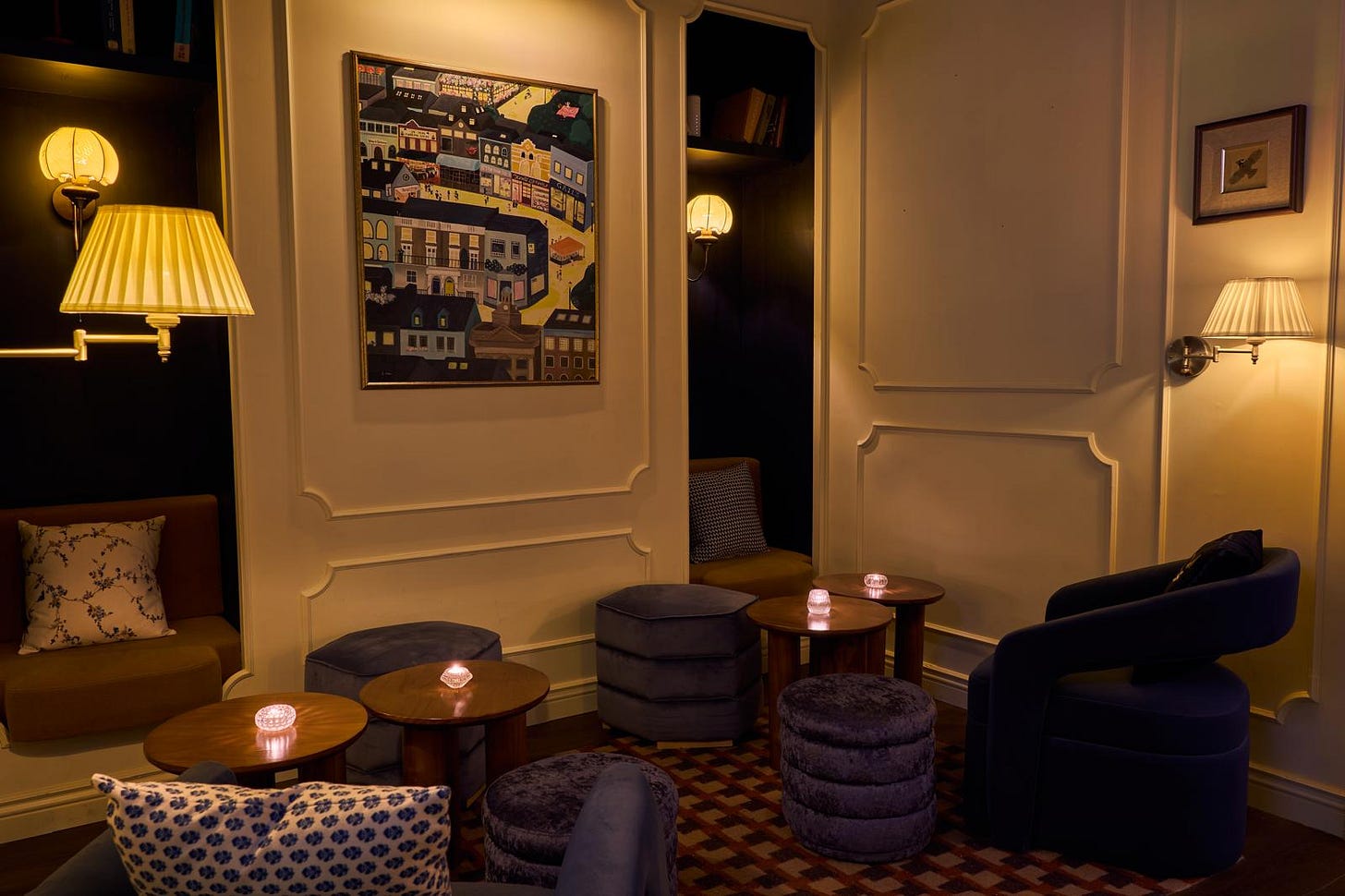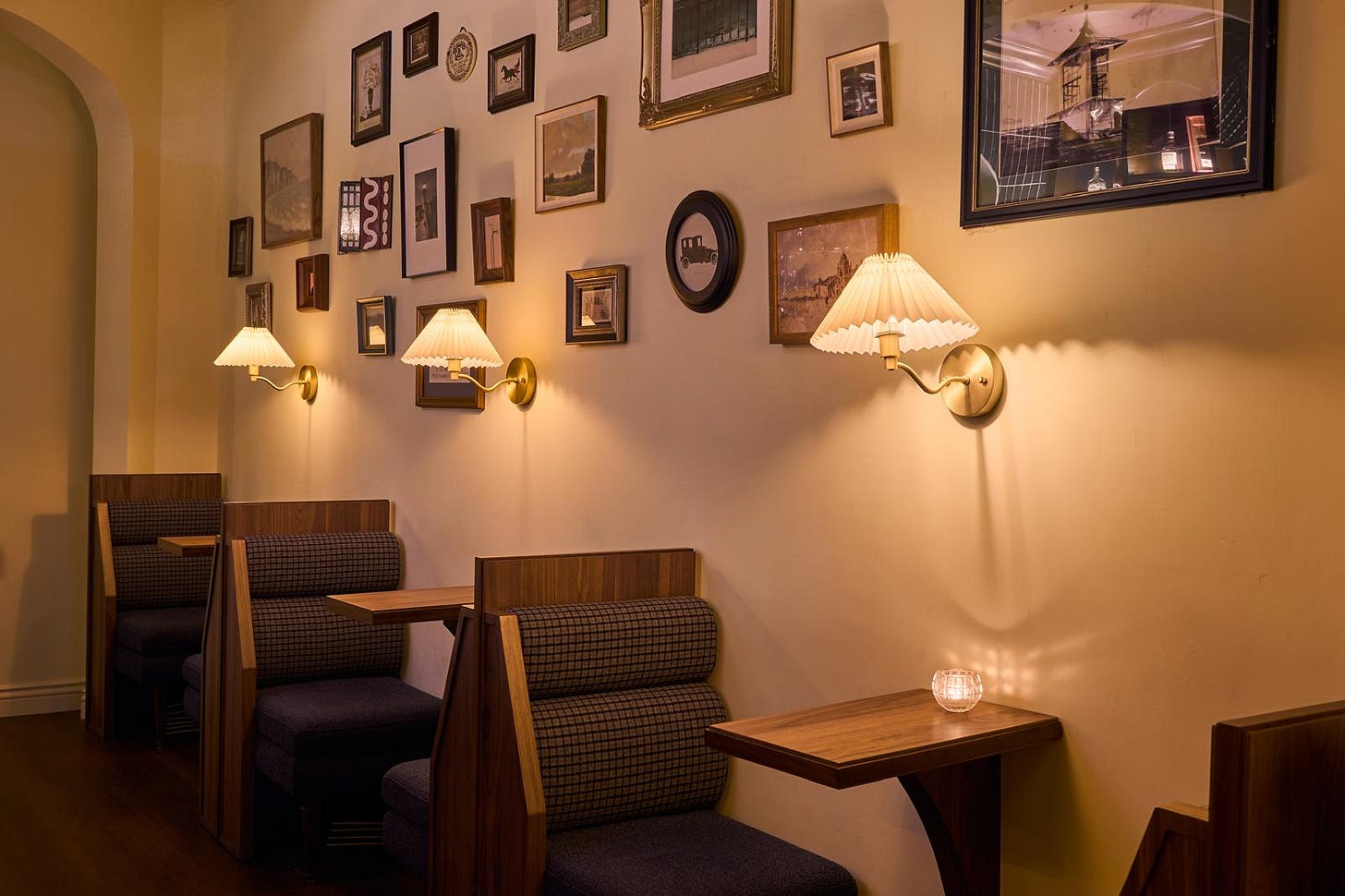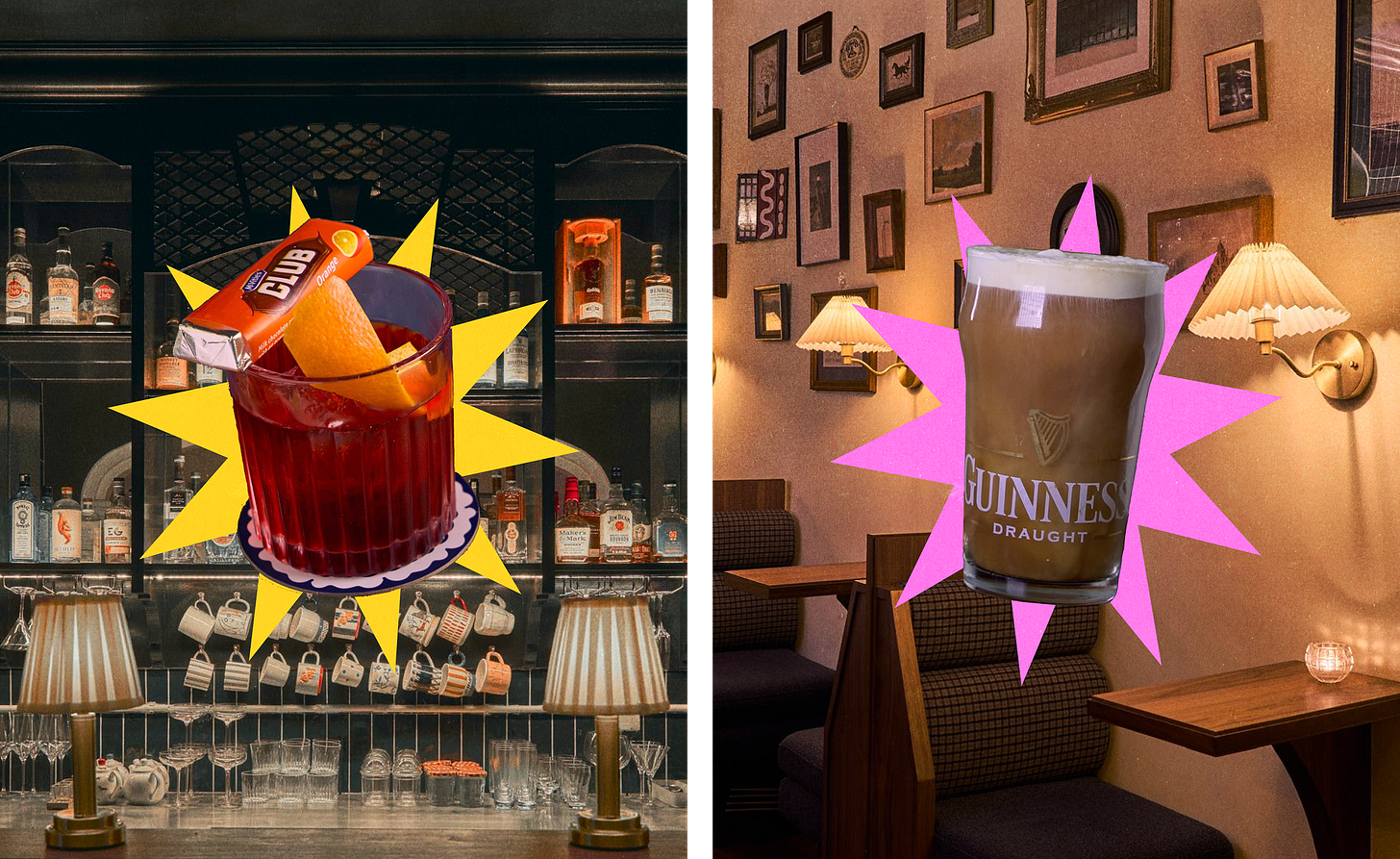Going Out to Stay In
What happens when two homebodies make a nightlife space of their own? The Holywell’s Bar is the answer.
Richard Tam and Andrea Mak are both homebodies. On weekends, they prefer a quiet evening in their apartment to the craze of a nightclub. “It’s a bit over stimulating,” Andrea, 27, says. She doesn’t like loud music, and her partner Richard, 27, doesn’t like to drink because he gets “Asian flush.”
Instead, the pair enjoys hosting friends at home—an almost impossible challenge in a city like Hong Kong, where the average single apartment is only 161 sq.ft.
“ With smaller houses, the bar culture is very strong in Hong Kong,” Richard says. “We put two-and-two together and said to ourselves, ‘Why don't we create a home-themed bar?’”
In Hong Kong’s Sheung Wan district, The Holywell’s Bar is Richard and Andrea’s answer to the city’s dearth of house parties. Or perhaps, more aptly, it’s what happens when two homebodies create a nightlife space of their own. The venue, which opened in 2024, is designed exactly like a home in London, a city where Richard and Andrea spent many adolescent and early adult years before returning to Hong Kong.
Inside, car keys hang near the entrance. Richard calls the bar’s main space a “living room,” where the floor is carpeted, and a fake fireplace is next to it. Bookshelves hover above velvet sofas attached to the wall, and a paper-lamp chandelier casts a gentle shimmer on short, grandma-friendly sofa chairs. A family lives here: Each menu item is named after fictitious members of the “Holywells” family, with flavors and liqueurs to match various stages in life.
But you don’t see any of this before knocking three times on the venue’s wide yellow door. You wait outside, standing on the marble panels and next to the white arches, until a staff member creaks the door slightly open. A fresh-eyed server will peer at you through the opening, coy like an elf, and then ask, “How many of you?” before ushering you to your seat.
“[In London], we were so strong on hosting house parties because for us, it’s more attractive to hear from a friend that they’re hosting a house party, versus saying, ‘Let’s go to a bar because I booked a seat for us.’” says Andrea.
“We try to create a more intimate space,” adds Richard. Other parts of the venue are designed as booths, so that guests can sit in front of each other—a decision that, the pair says, prioritizes intimacy over being able to host a higher headcount at the venue. “For us, a large part of [what we’re recreating] is the comfort of the home. You’d be happier in a house party because you don’t feel like your conversation is being heard by strangers.”
But while the ambience is one thing, the service is another. “ If you're easy and outgoing and you would like to chat, we’ll spend more time with you,” says The Holywell’s operations manager. “If you’d like to enjoy your drink by yourself, or with your friend, that’s fine too.” The goal, Richard and Andrea say, is to create a space that feels like home in a way that intervenes in the guest experience only as a friend would. Or, if such interventions aren’t welcome at all, staff make the guest feel at home by leaving them alone.
Creating a bar that replicates the home feels especially fitting to a younger consumer’s shifting fancies. Nights in are increasingly more in fashion than nights out: Global dance music platform Keep Hush found in a 2022 survey that less than a quarter of Gen Z and millennials are interested in going out. Last year, The Guardian dubbed today’s teens and twenty-somethings as “generation stay-at-home,” as young adults across Europe, Oceania, and East Asia become increasingly “hermit-like.”
Hong Kong lacks concrete data on young adult nightlife tastes, but other statistics help paint a clearer picture: Revenue for bars fell for three quarters straight in 2024, according to government data, revealing that the city is not exempt from the global shift towards spending the night at home.
Brand and creative strategist
describes this new shift observed as “soft clubbing,” which is “the desire to experience a curated sonic atmosphere without being confined to a traditional event space, let alone a full-on club experience.” Yusuf continues:For a generation that is drinking less and desiring more socially, the club is no longer the primary medium for our social needs. People are demanding deeper connections, turning to communal spaces to fulfill these needs. (Fountain of Yus)
The shift can be used to describe the rise in events that offer socializing similar to nightlife, but in different contexts. Think of the rise in run clubs, or DJ sets held at coffee shops, gyms, and bakeries. But “soft clubbing” might also describe less-than-traditional nightlife experiences like The Holywell’s, which twist the original idea of nightlife on its head to offer something more in line with today’s anti-clubbing tastes.
In September 2024, The Holywell’s hosted a pajama party, complete with pillows, eye masks, and teddy bears. It turns out that Richard and Andrea are not the only ones embracing this “soft clubbing” model of cozy nightlife—their guests do, too.
“Some of them even go beyond and help us take care of the table next to them,” Andrea says. “Our regulars might recommend what they’d drink personally [to other guests].”
“It should feel like you’re in the comfort of your own home, but the drinks are professional quality,” she added. “They’re meant to complement and enhance your stay-at-home conversations, basically.”
I visited the bar again on a quiet Monday evening, to cool off some nerves after the workday. Only four guests (myself included) were present. In the “living room,” a woman was lounging on the sofa, with her feet on the table and MacBook Air on her lap, relaxing after a long day at work. As I sipped my drink, songs like “It’s Raining Men” and “I Wanna Dance With Somebody” rang from the speakers. Richard says the bar’s playlist consists mostly of ’80s classics—or, the exact kind of music my Gen X parents would blast in my own house.
Like many dining venues in Hong Kong, you pay at the door. For an experience as immersive as this, you’re only leaving The Holywell’s “living room” once you pay for your drink. After settling the bill, I took a taxi directly to my apartment. Once I arrived home, I dove straight into my living room sofa. I had moved, but it was only from the comfort of one home to the next.







